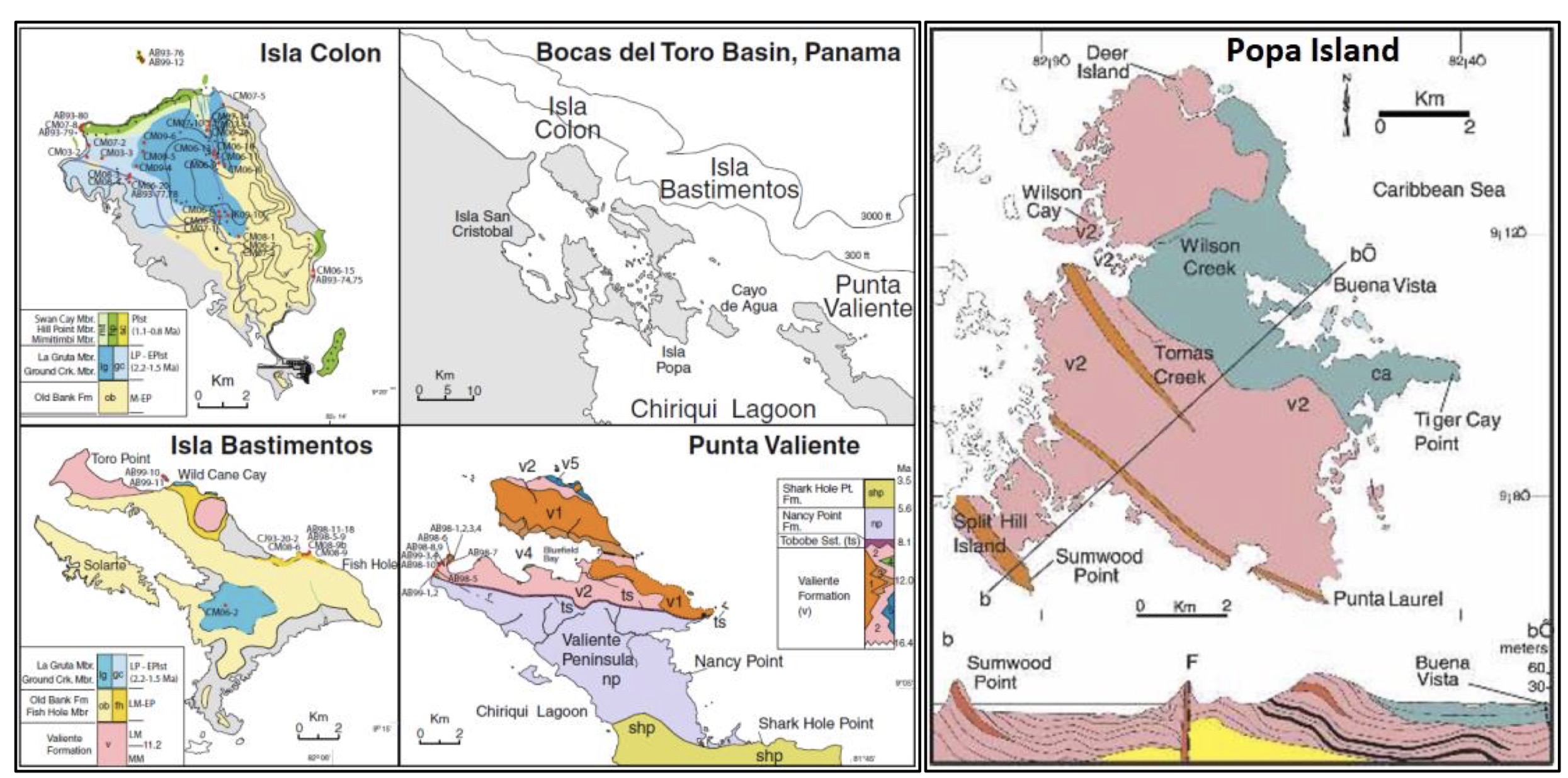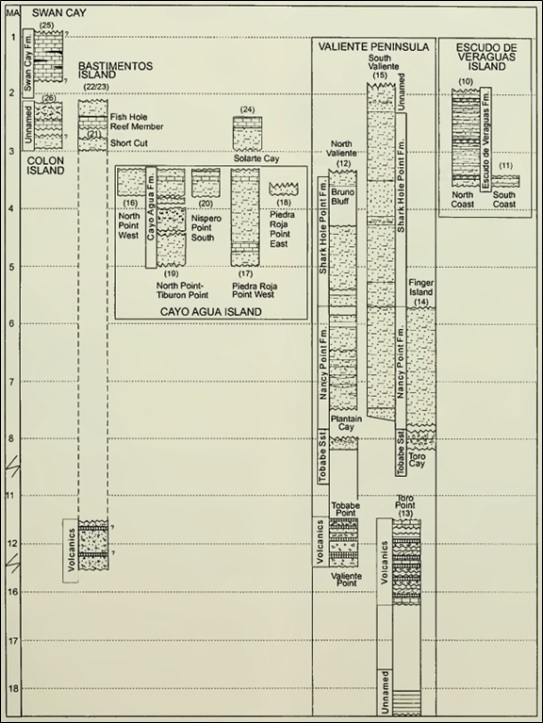Shark Hole Point Fm
Type Locality and Naming
[Figure 1. Bocas del Toro archipelago, NW Panama with map of the western & central portion together with the geological maps of Isla Colon, Isla Bastimentos, Punta Valiente (Klaus et al. (2012)) and Popa Island (Coates et al. (2005)). Section (b-b’) over Popa Island shows the Valiente Fm where it is unconformably overlain by the Pliocene Cayo Agua Fm. On Popa Island, only the v1 basalt flow facies and the v2 coarse volcaniclastic facies (see Figure 043) (not associated with reef lenses) are present, with thin layers of low rank coal, an example of which is exposed along the coast immediately north of Punta Laurel. A prominent basalt dike is exposed at the tip of the Punta Laurel where it cuts the Valiente Fm.]
Synonym:
Lithology and Thickness
Thickness: 340 m
The stratigraphic order of the Tobabe Sandstone Fm, Nancy Point Fm and Shark Hole Fm (three of the five formations which make up the Bocas Del Toro Gr) has been determined by physical superposition. The two remaining formations of the Bocas Del Toro Gr (Escudo De Veraguas Fm and Cayo Agua Fm) as well as the younger Pleistocene Swan Cay Fm are known only on islands and their position relative to the other units has been determined by biostratigraphic evidence (Figure 3)
[Figure 2. Coates et al. (2003 & 2005)’s description of the geological map and cross sections (A-A’ and B-B’) of the Valiente Peninsula (Punta Valiente) showing the distribution of the Punta Alegre Fm and Valiente Fm and the Bocas Del Toro Gr. The five lithofacies of the Valiente Fm are indicated by separate colors and numbers on the key (upper right) as follows; v1) basalt lava and flow breccia facies; v2) coarse volcaniclastic facies; v3) pyroclastic facies; v4) coral reef facies; v5) marine debris flow and turbidite facies.]
[Figure 3. Correlation of measured sections in the Bocas del Toro Basin. Coates (1999). (Reproduced with permission of the Paleontological Research Institution, Ithaca, New York)]
Relationships and Distribution
Lower contact
Upper contact
Regional extent
GeoJSON
Fossils
Age
Depositional setting
Additional Information
References: Jung (1989); Collins et al. (1999a & 1999b); Coates (1999); Collins (1993); Coates et al. (2005); Todd & Collins (2005); Beu (2010); Landau et al. (2012b); Schwarzhans et al. (2013).


